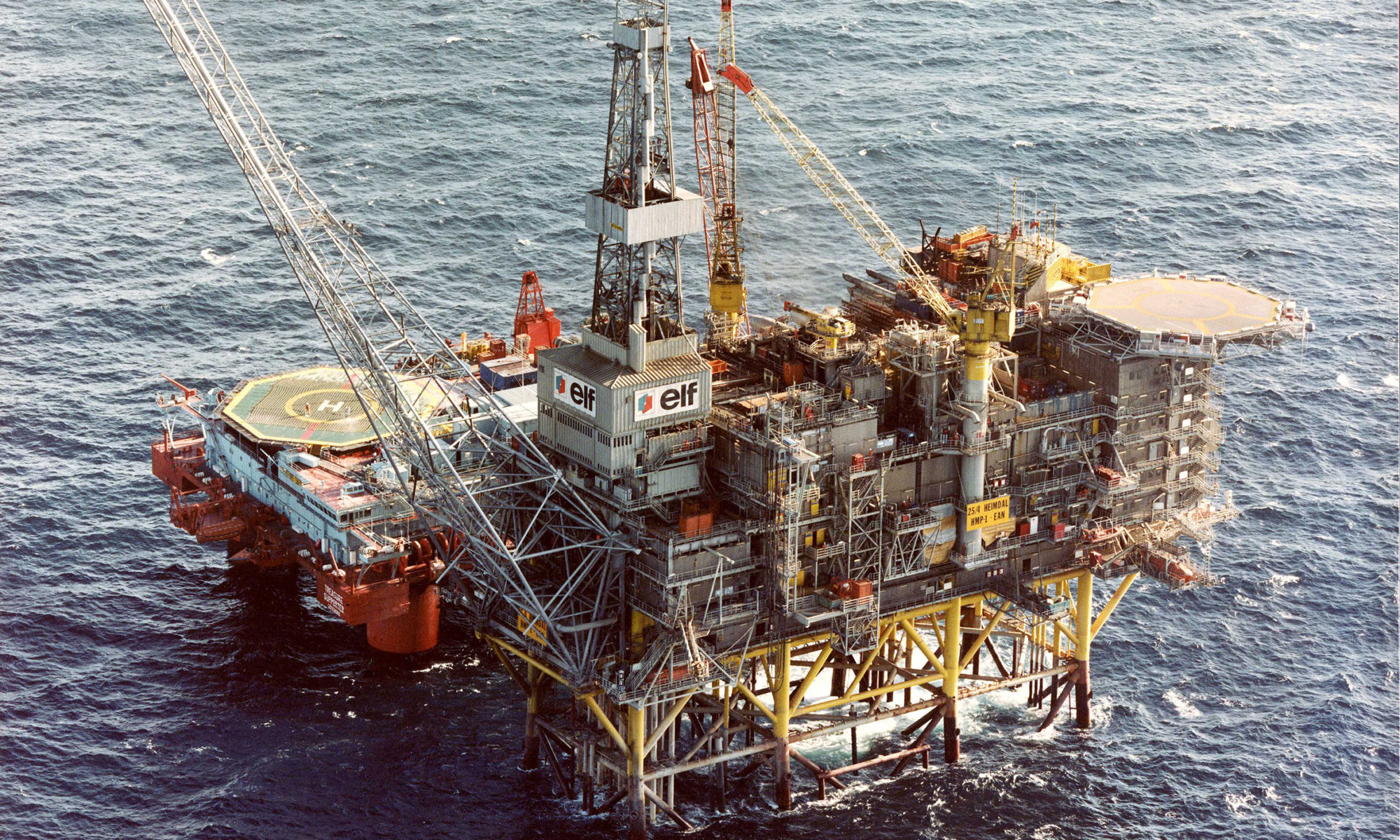Heimdal on stream

This North Sea field was developed with an integrated production, drilling and quarters (PDQ) installation supported by a steel jacket. During the summer of 1985, a pipeline was laid to transport condensate from Heimdal to Britain?s Brae field. Elf was operator for Heimdal, but later transferred this role to Hydro.
Originally, the production licence for this acreage had been awarded to the Canadian-dominated Pan Ocean group in June 1971 under the second offshore licensing round. When Pan Ocean secured the award of block 25/4, it ran into problems meeting the licence conditions. These included the provision of a bank guarantee of NOK 80 million and a 36 per cent carried interest agreement with the Norwegian government. At the same time, Pan Ocean undertook to drill a well by 11 June 1977. To manage that, the licensee group had to join forces with somebody. Its efforts to secure a rig brought Pan Ocean into contact with Elf and the Petronord group. The company wanted to lease Elf?s Neptune 7, which would soon be available. It sought to bring Elf/Petronord into the licensee group in a joint venture with Elf as operator. During the negotiations, Elf got a sight of the seismic charts and immediately observed the similarities to Frigg in the geological structure.
Discussions between the sides led to a letter of intent. Petronord would contribute experience and expertise. In the event of a discovery, Elf would investigate opportunities for coordinating the exploitation of Heimdal with Frigg. Petronord would provide the bank guarantee which Pan Ocean had to give the Norwegian government. In the letter of intent, Elf/Petronord appear to have taken over the whole licence. Before exploration drilling could begin, the agreement had to be approved by the Ministry of Industry. The latter expanded the drilling programme to embrace two wells, raised the royalty from 10 to 12.5 per cent, and increased the government?s option deal from 36 to 40 per cent. This agreement was signed on 8 March 1972.
A first well was drilled between July and December 1972 and proved both gas and condensate (light oil). The government now exercised its option and secured a 40 per cent interest. Combined with Hydro?s share of Petronord, this ensure a Norwegian majority of 57 per cent in the licensee structure. Heimdal had become a national business. Plans called for the field to be developed with two platforms, coming on stream in the late 1970s. However, new seismic data became available in December 1975 and prompted a 30 per cent reduction in estimated recoverable gas, from 50 billion standard cubic metres to 30 billion. Elf concluded that a development could not be justified and sought to withdraw the landfall application it had submitted to the Storting (parliament). It was supported by both Total and Hydro. Statoil, which had taken over the government?s interest, was keen to maintain the application. Pan Ocean wanted to postpone it. Retaining the application required unanimity, and it was accordingly withdrawn. A Heimdal development was postponed.
But the project was not put entirely on ice. Different and cheaper development concepts were assessed, while new transport solutions emerged and raised interest in the field again. Statoil had begun planning a separate transport system to continental Europe. Rich gas from the Statfjord field would be piped to Kårstø north of Stavanger, where the natural gas liquids were removed. The dry gas would be piped to a riser platform in the North Sea, where it could be mixed with dry gas from Heimdal and sent on to Ekofisk for transport through the Norpipe trunkline to Emden in Germany. Condensate from Heimdal would be piped to Cruden Bay in Scotland.
New development plans were now drawn up. This work proceeded without problems, and the field was ready to come on stream five months ahead of schedule. It was also more than NOK 500 million below budget. Heimdal was regarded as one of the most successful developments on the NCS up to that time.
“Frigg’s Future”The Heimdal name